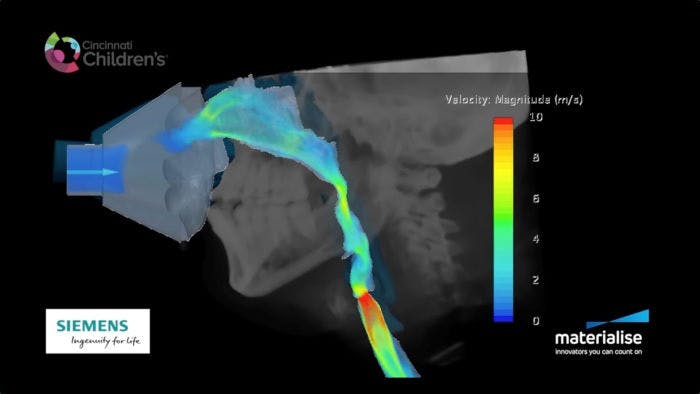How do clinicians determine which interventions would be most beneficial for each patient? Can simulation help? In many cases, combining Computational Fluid Dynamics (CFD) simulations with patient-specific anatomical data can provide clinicians with the kind of deep insight needed to help guide their surgical decisions.
This webinar, originally hosted by Materialise, showcases impressive research demonstrating the process of going from scans to simulation in a smooth workflow, resulting in high-fidelity anatomical and multiphysics simulations of airflow in the upper/central airways while they are moving. For maximum realism, the anatomical models are created based on dynamic CT/MRI scans of real-life patients.
This novel simulation work has the potential to better equip clinicians in diagnosing and selecting the right treatment for patients with sleep apnea, or infants suffering from tracheomalacia.
Note: CFD simulations combined with realistic anatomical models also have the potential to help medical device developers reduce the time and cost of clinical trials. This is another scenario in which the use of anatomical models based on dynamic CT/MRI scans of real patients is essential, as discussed in this webinar featuring CFD performed on virtual patients.
You will learn:
- How to go from scans to simulations, converting dynamic CT/MRI images into accurate, simulation-ready 3D models of complex, thin anatomies (like the upper airways)
- How to perform CFD simulations on moving 3D anatomical models (using the example of moving, breathing upper airways)
- How realistic airflow simulations can provide the kind of insight that helps clinicians diagnose and treat respiratory conditions
Speakers:
- Antoon Dierckx, Innovation Manager, Materialise
- Alister Bates, PhD., instructor in the Division of Pulmonary Medicine at Cincinnati Children’s Hospital Medical Center
- Javier Garriz, Marketing Manager, Siemens Digital Industries Software
